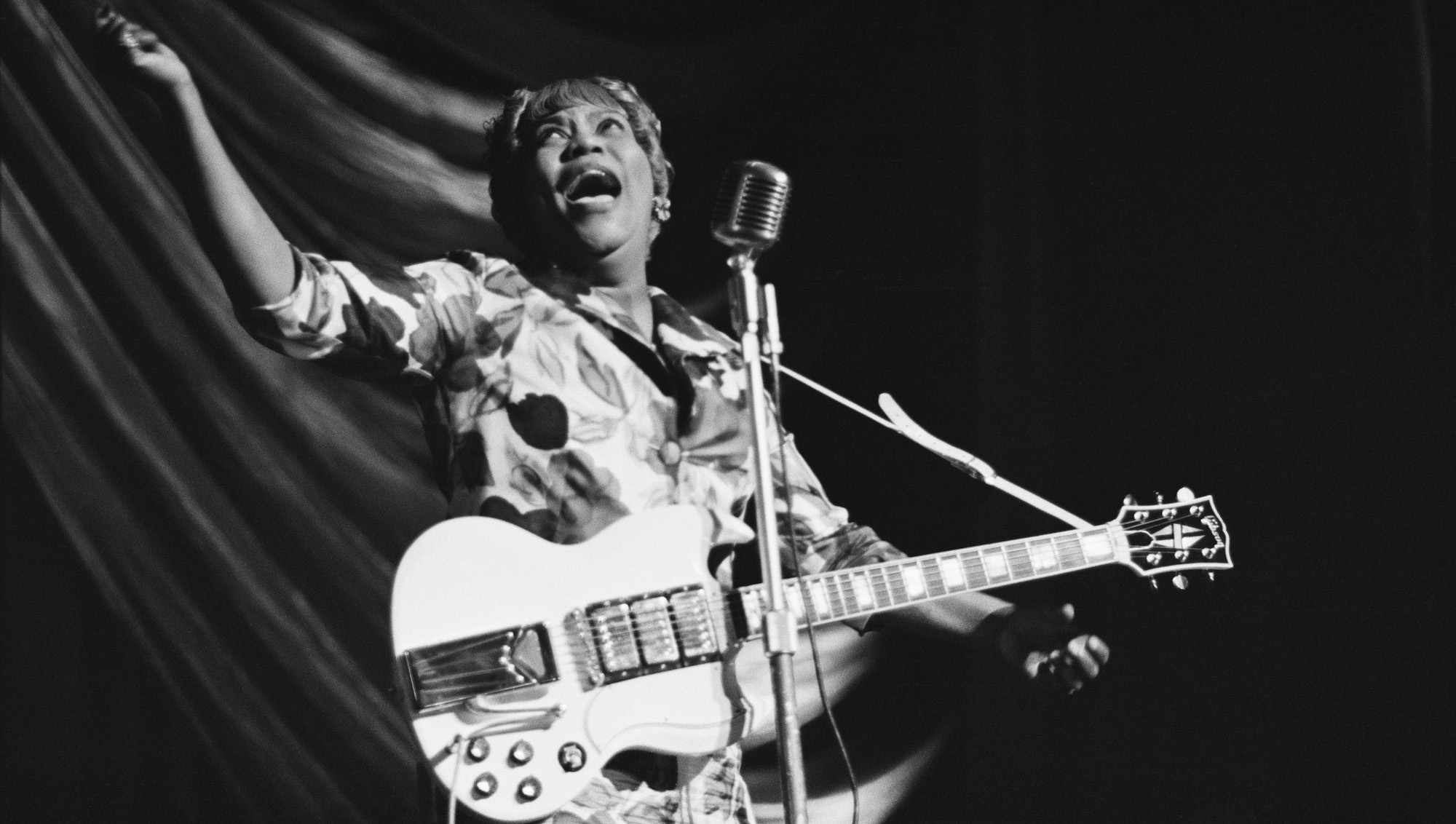Sister Rosetta Tharpe wielded her electric guitar with finesse and ferocity, creating the template for electric blues – this tutorial unpacks her full-force soloing style
The Godmother of rock 'n' roll played in Open E but we'll make it easy for you with an audio and tab lesson in standard tuning that gets to grips with her gospel licks, double-stops and chromatic runs

It is a great shame that Sister Rosetta Tharpe seldom receives the recognition she deserves, especially considering the role she played in the development of popular music. Dubbed The Original Soul Sister and The Godmother of Rock And Roll, her innovative blend of gospel, blues, and more not only captivated audiences but also laid the foundation for future musicians.
Born Rosetta Nubin on March 20, 1915, in Cotton Plant, Arkansas, she exhibited an exceptional talent for music from an early age. Raised in the church, Rosetta immersed herself in the soul-stirring melodies of gospel music, which would later become the cornerstone of her musical identity.
By the age of four, she was already singing and playing the guitar at religious events, dazzling audiences with her precocious talent and powerful voice.
Sister Rosetta’s unique musical style was shaped by a diverse range of influences, from which she developed a sound that was original and exciting, blending the spiritual fervour of gospel with the earthy rhythms of the blues. Her electrifying live performances truly set her apart, and she would take to the stage with an intensity and charisma that few could match.
She wielded her guitar with a combination of finesse and ferocity that left audiences spellbound, and, at a time when female guitarists were a rarity, she stood out as a virtuoso, challenging gender norms and breaking down barriers at every turn.
Her playing was characterised by soulful phrases and speedy runs that were as original as they were exhilarating. She had a strong grasp of the theory behind her craft, and her solos often spelled out the harmony, blending diatonic scales, pentatonic blues licks, and chromaticism with great effect.
Unusually, Rosetta played almost exclusively in Vestapol tuning (open E), an unusual choice for non-slide players. She would often pitch this down a tone or two, and in doing so unlocked a realm of possibilities as she could utilise open strings. This, combined with chromatic phrases and fast triplet runs, enabled her to craft intricate, exciting lines that exemplified her creative virtuosity.
The preference for tuning her instrument down so low likely led her to use heavier strings, which also shaped her unique style. Notably, she avoided extensive string bending, except for occasional half-step bends and bluesy curls. Instead, she expertly employed double-stops and dynamic fretboard slides, creating dramatic motifs that highlighted the song’s chord progression.
Mastering these various elements is essential for faithfully reproducing her style and capturing the essence of this trailblazing artist’s sound. While the solos in this lesson are presented in standard tuning for simplicity, they encapsulate the core traits of Tharpe’s unique and groundbreaking style. Dive in and enjoy!
Get The Tone
Amp Setttings: Gain 4, Bass 2, Middle 5, Treble 5, Reverb 4
Sister Rosetta played Gibson Les Paul Goldtop and SG Custom guitars once she went electric, but she stands out as one of the first to use a cranked tube amp (Gibson or Vox) to achieve overdrive. An edge-of-break-up will be suitable for these examples. Opt for a bright tone with the bridge pickup engaged, and dig into the strings to replicate Tharpe’s distinctive attack.
Example 1.
Our first solo demonstrates key features of Sister Rosetta’s style in an up-tempo gospel track. Get used to the quick position shifts by practising slowly. With big slides or jumps, get your eyes fixed on the target note before your hand attempts the move. This will allow your hand to meet your eye-line and land with precision.
Example 2.
This slower track highlights Rosetta’s ability to play over changes. Look to spot the target notes, which are often the chord tones in the underlying harmony (the Gb in bar 4, for example, is the b3rd of the E bm chord). The triplet run in bar 6 is a distinctive part of Tharpe’s sound and can be employed at faster tempos should you wish.
Get The Pick Newsletter
All the latest guitar news, interviews, lessons, reviews, deals and more, direct to your inbox!
David is a guitarist, producer, and educator. He has performed worldwide as a session musician, with artists and bands spanning many musical genres. He draws upon over 20 years of experience in both live performance and studio work, as well as numerous composing credits. As a producer, he's collaborated with artists across genres, including pop, RnB, and neo soul. David holds a master’s in jazz guitar and teaches at BIMM London and the London College of Music. He is also a regular contributor to Guitar Techniques magazine, sharing his love of blues in a monthly column.
“There are so many sounds to be discovered when you get away from using a pick”: Jared James Nichols shows you how to add “snap, crackle and pop” to your playing with banjo rolls and string snaps
Don't let chord inversions bamboozle you. It's simply the case of shuffling the notes around








![Joe Bonamassa [left] wears a deep blue suit and polka-dotted shirt and plays his green refin Strat; the late Irish blues legend Rory Gallagher [right] screams and inflicts some punishment on his heavily worn number one Stratocaster.](https://cdn.mos.cms.futurecdn.net/cw28h7UBcTVfTLs7p7eiLe.jpg)


